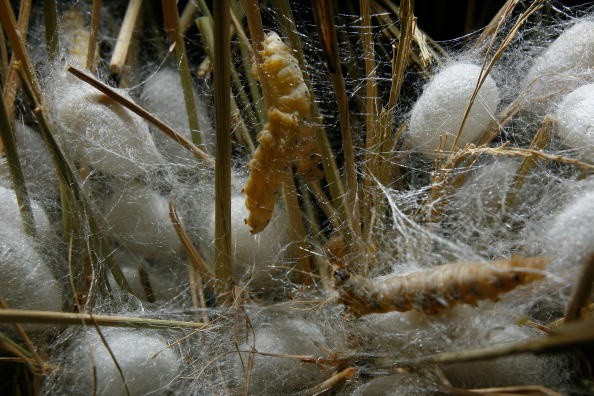Silk, despite its fine fibers, is known as fairly durable material. Combining the natural substance with synthetic components, the new composite material can be used for biomedical implants.
Researchers behind the study will present their results at the American Chemical Society (ACS) Fall 2020 Virtual Meeting & Expo on Monday, August 17. ACS will be conducting a series of meetings from Monday up until Thursday, August 20, and will feature more than 6,000 presentations on different branches of study in science.

Silk - Polymer Compounds
Silk is among the oldest natural materials used in medicine. Its thread has been used by ancient doctors to close and stitch up wounds for as far as 2,000 years ago. Up until today, silk sutures are used in some surgical procedures, including eye operations.
"Silk has great potential for use in biomedical applications," said Juan Guan, Ph.D., and the principal investigator of the study. Guan noted the human body's tolerance to silk, even naturally degrading and absorbing it.
This new work from Guan and fellow researchers from Beihang University in Beijing, China aims to develop a composite material incorporating silk fabric woven from one long thread. Previous studies have focused on the use of silk together with synthetic materials by using only short fibers or using components from the substance, such as its primary protein.
RELATED: Durable Bioplastic Synthesized from Spider Silk Fortified Wood Fiber
The research team used the silk threads from the common domesticated silkworm Bombyx mori and the wild silkworm species Antheraea pernyi, whose threads are more resilient and flexible. The silk threads are then combined with a polymer matrix, often found in its epoxy form, and are used in adhesives. Together, the combined material from the silk and the polymer create a laminate - appearing like a thin transparent plastic film - which can be cut and shaped depending on the requirements of the application.
Combining both natural and synthetic materials creates an implanting material that supposedly better matches the tissues inside the human body compared to conventional materials used today. Furthermore, the Beihang University research team has been working together with orthopedic doctors to design and conceptualize structures that temporarily hold parts of the spine in place as they recover and fuse after surgery. Currently, existing procedures require metal braces to do the same task.
Using the silk and polymer composite provides a material whose hardness and stiffness are more compatible with human bones compared to metals. These make the composite brackets more resilient and more comfortable than metal-based structures.
A Few Material Challenges
While the silk and polymer composite is a promising alternative for biomedical implants, researchers note that there remain a few challenges to overcome. One is that the inside of the human body is naturally moist. This nature of the human body poses a challenge to the composite as silk is absorbent, but too much moisture will soften silk and damage its structural integrity.
Among the experiments conducted by the Beihang University team involved testing how the silk-polymer composites respond to moisture exposure or direct submersion in water. While the laminate's stiffness somehow deteriorated, it was still able to continue working as an implant.
RELATED: Study Finds New Kind of Protein Present in Spider's Web
Another challenge in the new material is that the epoxy can not be absorbed and degraded by the human body. Therefore, it is not advisable for implants that are intended to be dissolved later on. To work around this problem, Guan and her team are looking for biopolymer alternatives. These are polymer materials based on organic materials and can be absorbed by the body.
To see how the silk, in this case, Spider Silk, holds up against its steel equivalent, watch the Mythbusters Jr. episode below:










